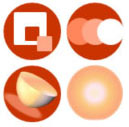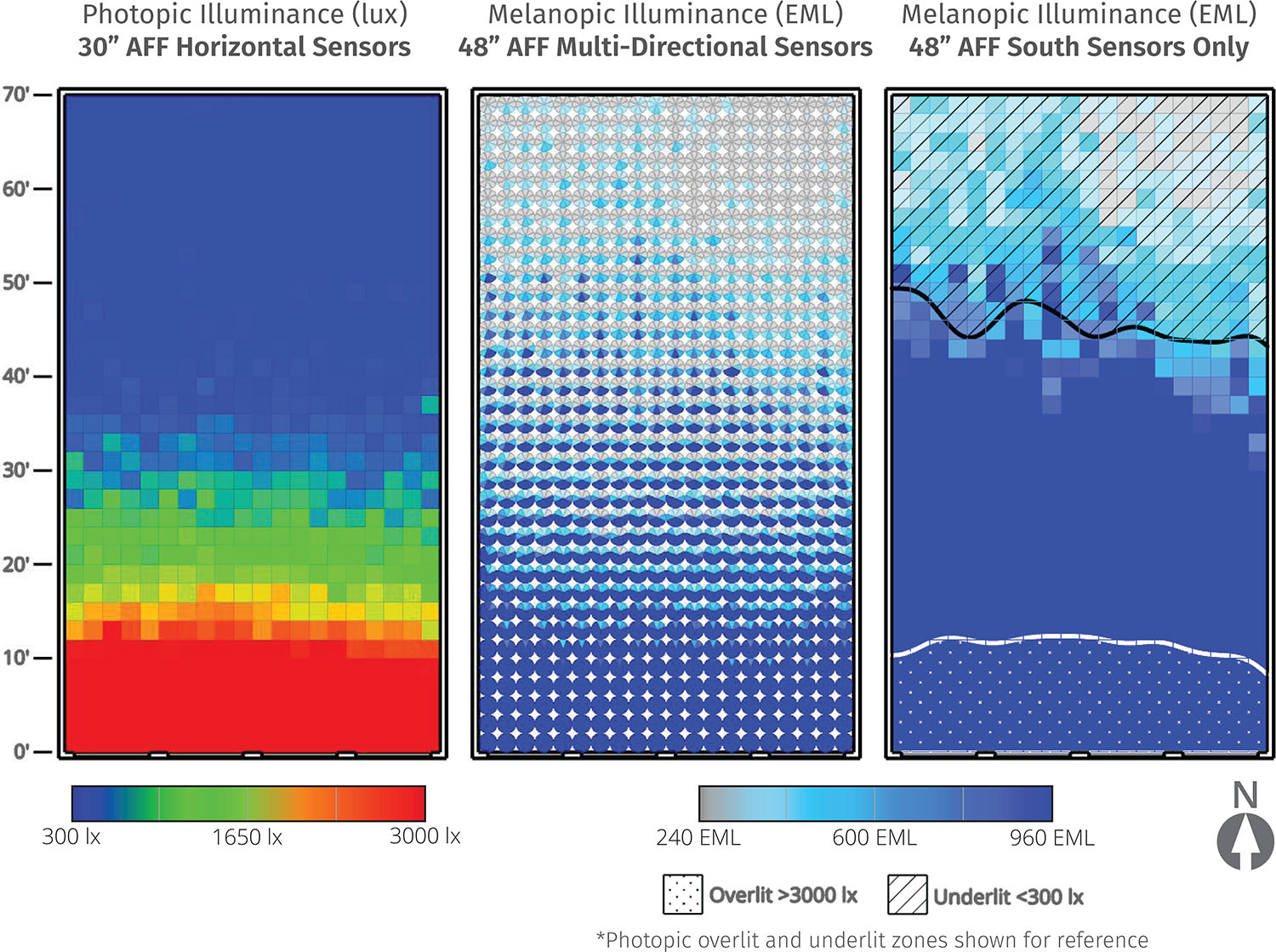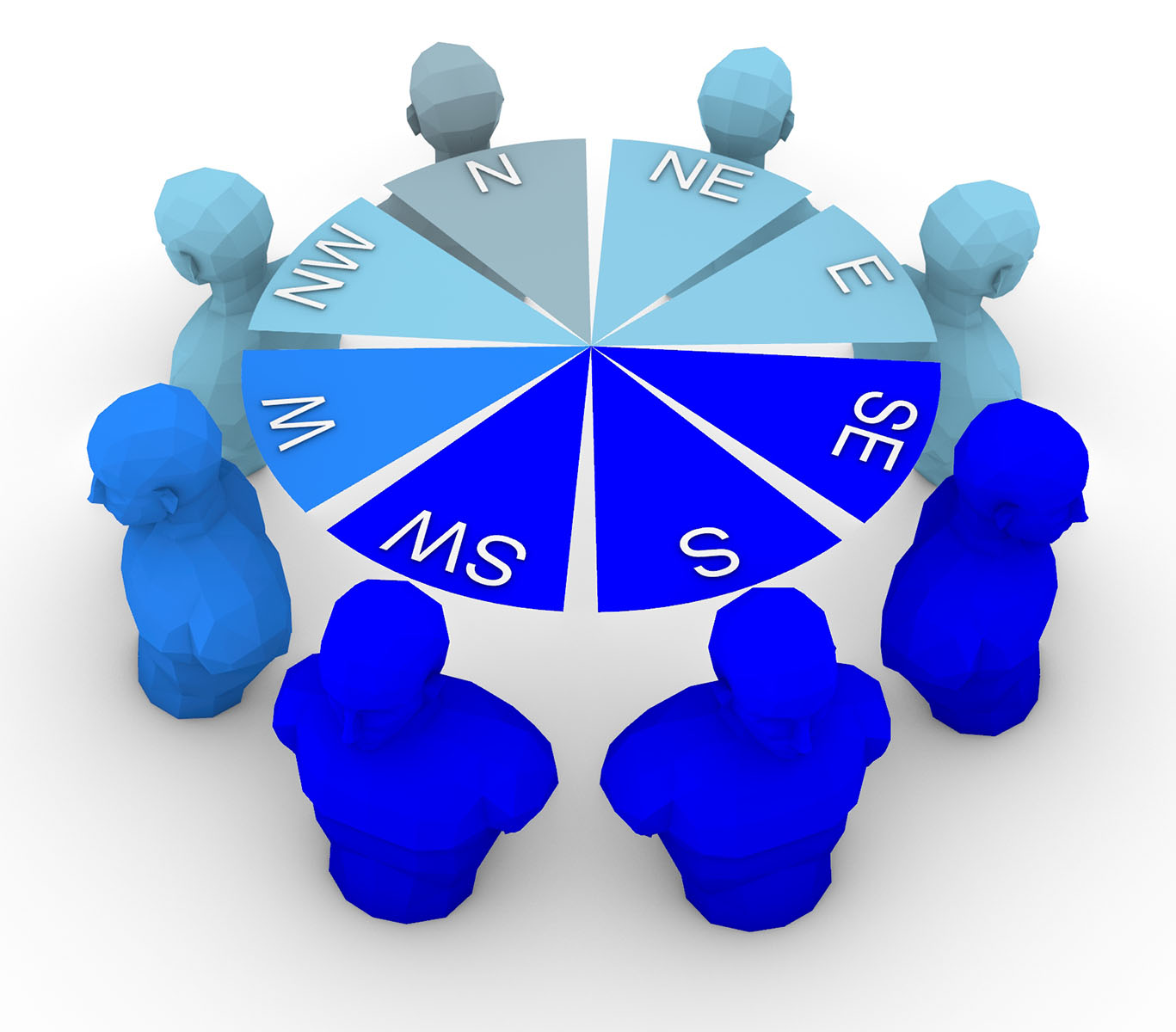| |
|
| |
|
|
Research Gate |





|
News and Recent Publications:
We received the CIE 2025 Best Paper Award for:
Inanici M, Greenberg J, Lang RA, Struve J, Gruner KA. “Metrology for Neuropic response to light: A case study in a neonatal intensive care unit,” International Commission on Illumination (CIE) 2025 Conference, July 4-11, 2025.
Knoop M, Bellia L, Błaszczak U, Dumortier D, Inanici M, Kenny P, Liang S. “A round robin for a worldwide daylight measurement campaign: insights, challenges, and lessons, learned,” International Commission on Illumination (CIE) 2025 Conference, July 4-11, 2025.
Knoop M, Balakrishnan P, Błaszczak U, Diakite-Kortlever A, Hernández Andrés J, Inanici M, Kenny P, Maskarenj M, Pierson C, Thorseth A. “Methodology to modify and adopt standardised spectral power distributions for daylight to account for geographical, seasonal and diurnal variations in practical applications,” Lighting Research and Technology, 2025. https://doi.org/10.1177/14771535251322386
Knoop M, Balakrishnan P, Bellia L, Błaszczak U, Diakite-Kortlever A, Dumortier D, Hernández Andrés A, Inanici M, Kenny P, Kobav MB, Liang S, Luo T, Maskarenj M, O’Mahoney P, Pierson C, Thorseth A, and Xue P. “Our skies are too grey: Where is the colour?” Lighting Research and Technology, 2025. https://doi.org/10.1177/14771535251322618
Gundula Proksch (PI) and Mehlika Inanici (co-PI) collaborate on a NSF funded project "Belmont Forum Collaborative Research: Aquaponics optimization in a local climatic, economic and cultural context", 2024-2027.
In-house Software:
|
This material is presented to ensure timely dissemination of scholarly and technical work. Copyright and all rights therein are retained by authors or by other copyright holders.
MEASURING THE SKY SPECTRA
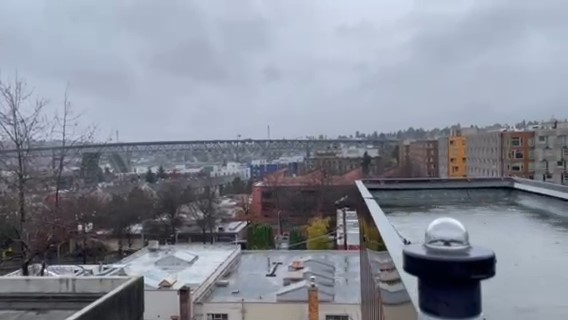 |
PUBLICATIONS:
Knoop M, Bellia L, Błaszczak U, Dumortier D, Inanici M, Kenny P, Liang S. “A round robin for a worldwide daylight measurement campaign: insights, challenges, and lessons, learned,” International Commission on Illumination (CIE) 2025 Conference, July 4-11, 2025.
Knoop M, Balakrishnan P, Błaszczak U, Diakite-Kortlever A, Hernández Andrés J, Inanici M, Kenny P, Maskarenj M, Pierson C, Thorseth A. “Methodology to modify and adopt standardised spectral power distributions for daylight to account for geographical, seasonal and diurnal variations in practical applications,” Lighting Research and Technology, 2025. https://doi.org/10.1177/14771535251322386
Knoop M, Balakrishnan P, Bellia L, Błaszczak U, Diakite-Kortlever A, Dumortier D, Hernández Andrés A, Inanici M, Kenny P, Kobav MB, Liang S, Luo T, Maskarenj M, O’Mahoney P, Pierson C, Thorseth A, and Xue P. “Our skies are too grey: Where is the colour?” Lighting Research and Technology, 2025. https://doi.org/10.1177/14771535251322618
PRESENTATIONS:
Mehlika Inanici and Martine Knoop presented "Tales from Sky Spectra" at the 2024 International Radiance Workshop in Salt lake City, Utah between August 26-28, 2024.
NEWS:
Dr. Martine Knoop from Technical University of Berlin visited the University of Washington as part of the round robin calibration study of the CIE Technical Commitee 3-60 Spectral Daylight Characteristics in June 2024. It has been a great opportunity to work closely with Martine, learn from her extensive experience in sky spectra measurements, and share the joys and challanges of data collection. Thank you, Martine!
We installed a spectrophotometer the roof of Gould Hall at the University of Washington to measure the spectral variability of the Seattle skies. The data collection started in June 2021. The equipment (Ocean Insight Flame VIS-NIR Spectrometer) and its installation is funded by ZGF Architects and the University of Washington, College of Built Environments, Applied Research Consortium.
|
SKY SPECTRA MODELS
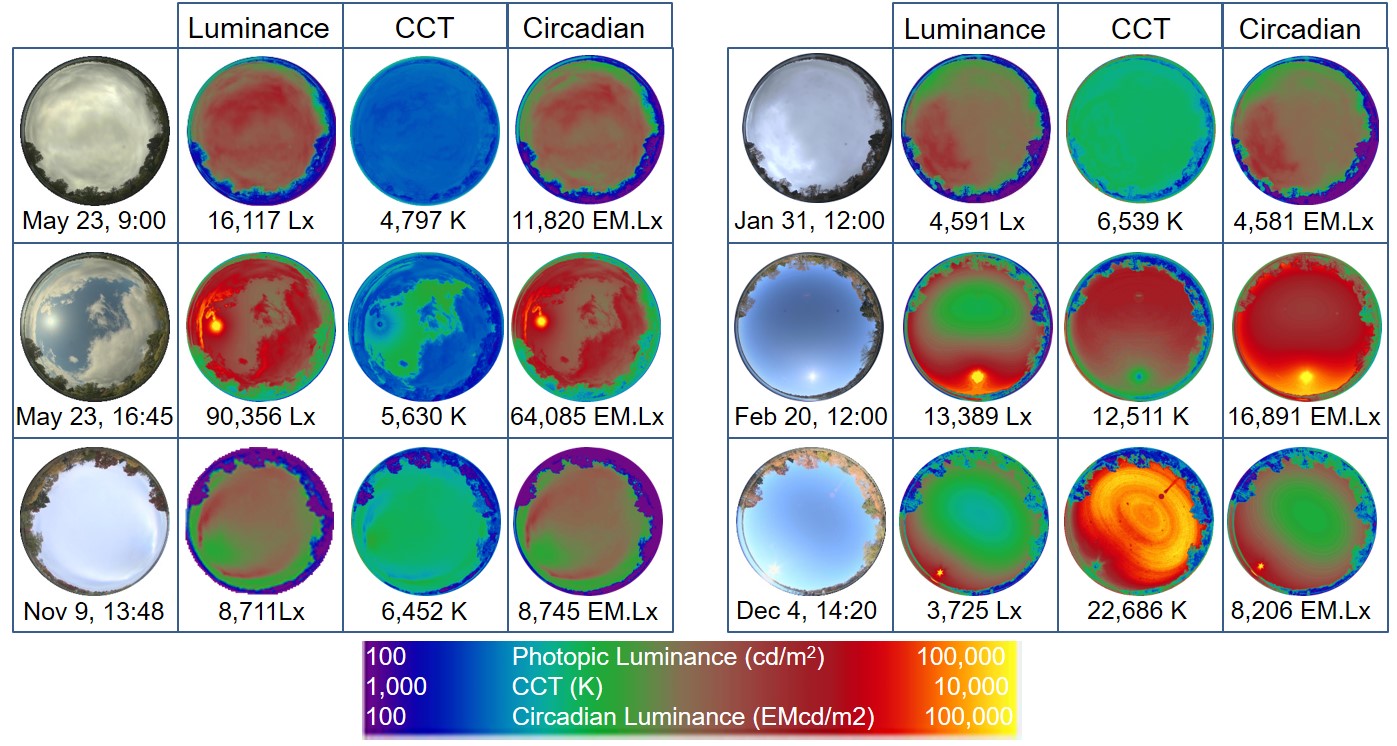
PUBLICATIONS:
We have been awarded the prestigious Leon Gaster Award from the Society of Light and Lighting (SLL) for our paper: Inanici M, Abboushi B, and Safranek S. “Evaluation of Sky Spectra and Sky Models in Daylighting Simulations,” Journal of Lighting Research and Technology, 55(6): 2023, 502-529. The award is presented to Mehlika Inanici at the Society’s Annual General Meeting and Awards evening on May 14, 2024 in Leeds, UK. The Leon Gaster Award is awarded annually by the Society of Light and Lighting for the best paper of the year, concerned with lighting applications, and recognizes the role that Leon Gaster made as the founder of the British Illuminating Engineering Society in 1909, which is the forerunner of the Society of Light and Lighting. The award was first made in 1929.
- Inanici M. “Improving the Accuracy of Spectral Daylighting Simulations in Buildings,” Technical report prepared for the Pacific Northwest National Laboratory (Department of Energy), Integrated Daylighting, Electric Lighting, and Controls Research, September 2020.
- Inanici M. "Focusing on Daylight Spectra", Illuminating Engineering Society (IES), Forum for Illumination Research, Engineering, and Science (FIRES), August 2019.
Spectral properties of daylight surpasses any other light source. Its dynamic intensity and spectra across the full spectrum facilitates sustainable daylighting practices, produces best color rendition, and regulates circadian rhythms in all living beings. However, simulation models do not typically include spectral variability; daylight is modelled as a uniform, equal energy white source. In this paper, tristimulus calibration procedures are utilized to create spectrally accurate High Dynamic Range (HDR) photographs. HDR photographs of skies are collected and utilized as an input to image based lighting (IBL) simulations. The impact of color variations across the sky dome and between different sky conditions are studied. Per-pixel photopic luminances, tri-stimulus chromatic distributions, Correlated Color Temperatures (CCT) and circadian luminance and illuminance values are quantified for image-based daylighting simulations, and compared with standard colorless Perez skies.
LINKS:
Links to relevant other research and publications: Sky Models / Image based sky models
LARK MULTI-SPECTRAL LIGHTING SIMULATION TOOL: CALCULATION OF CIRCADIAN LIGHT
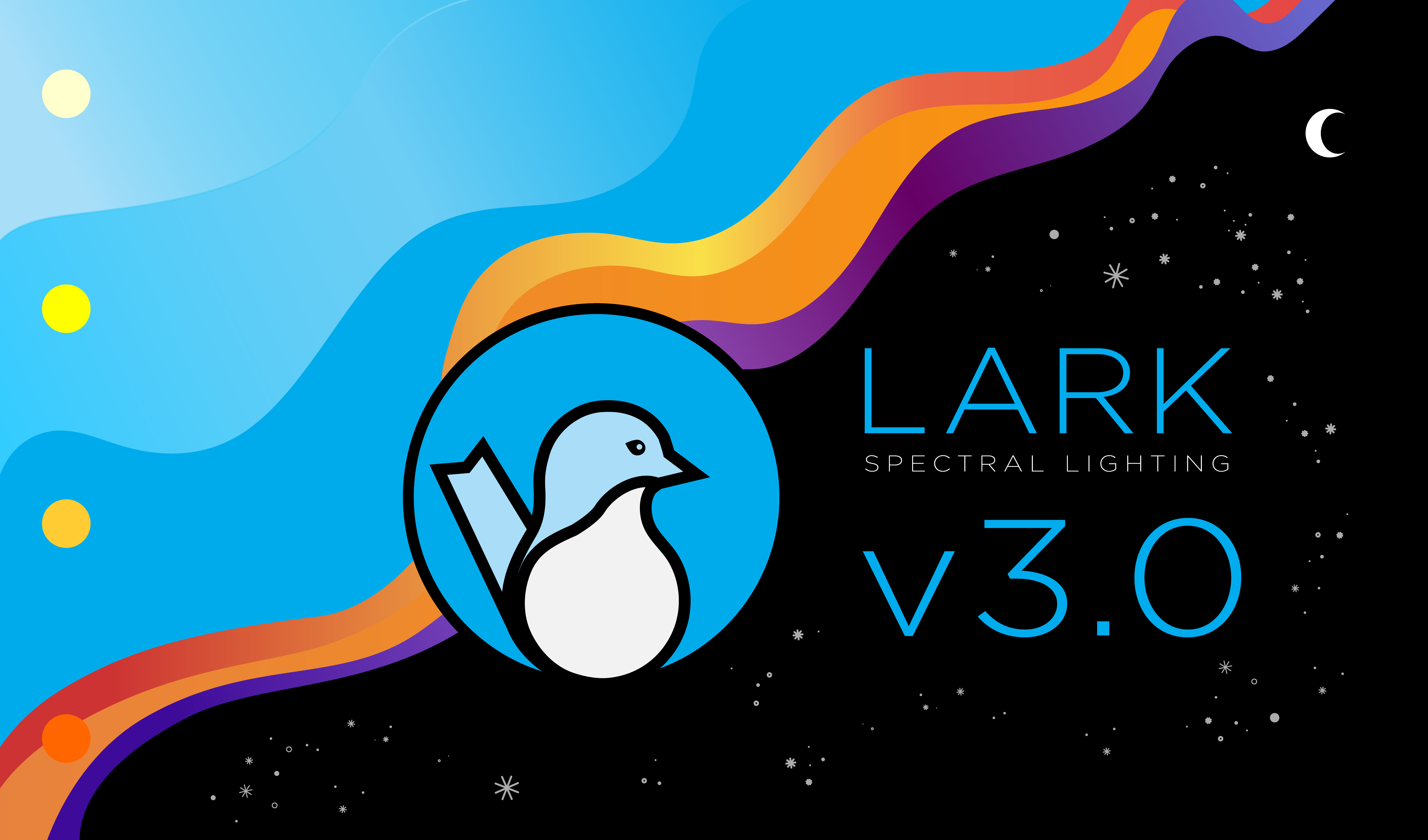
A growing body of research has shown that human ocular system functions not only to facilitate vision but to reset the circadian clock to synchronize it with the 24 hour daily cycle and/or with the local time. Lighting professionals increasingly appreciate the influence of light on human health and wellbeing. A holistic approach to design necessitates consideration for both visual and non-visual aspects of lighting. There are established methods for analyzing the luminous environment for photopic responses, but there is a need for a workflow to study and analyze non-visual impact of light in built environments. This research addresses this need. The objective of this research is to develop a multispectral lighting simulation tool that can be used to calculate both photopic and melanopic lighting values (v.0 - v.1.0) and neuropic lighting values (v.3.0). Instead of utilizing the traditional 3 channel simulation, multi channel simulation allows the user to divide the spectra in any number of channels.
SOFTWARE:
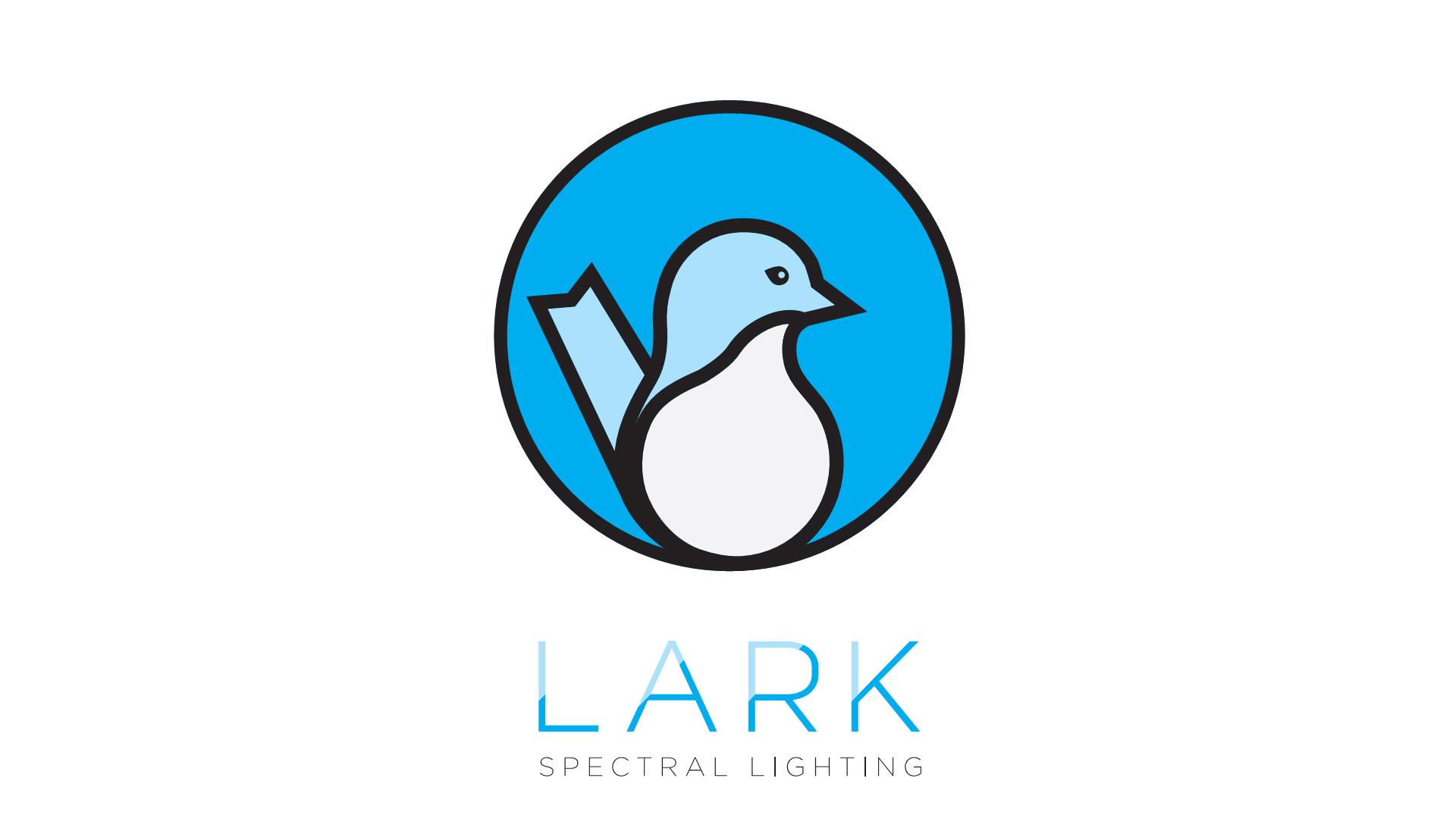 |
- Lark Multi-Spectral Lighting tool, is developed in Grasshoper/Rhino environment. The simulation engine is Radiance; and Lark is provided as an open source and freely available tool. The objective is to make circadian lighting analysis more accessible to architects, lighting designers, researchers, and other interested parties. Lark allows for simulations both in 3 and 9 channels. Along with photopic luminance and illuminance values, Equivalent melanopic illuminance (EML), and Equivalent Neuropic illuminance (ENL) and -luminance (EM.cd/m2) values are computed.
- Lark Spectral Lighting Tool reaches new milestones:
- Lark Version 3.0 is developed as a collaboration between Univeristy of Washington (Mehlika Inanici, Ph.D., Bo Jung, and Zining Cheng) and ZGF Architects. It is funded by Appled Research Consurtium and ZGF Architects based on v.1.0 and 2.0. It can be downloaded from Food4Rhino. Github link, Youtube link (for tutorials).
- Blog on v.3.0.
- Lark version 2.0 is developed by Clotilde Pierson, Ph.D. (EPFL, Oregon State University) and Myrta Gkaintatzi-Masouti, M.Sc. (Eindhoven University of Technology ) based on Lark v.1.0.
- After 7 years of beta version, Lark 1.0 is released in 2022 as a collaboration between Mehlika Inanici (University of Washington) and ZGF Architects (with Marty Brennan).
- Lark was originallt developed as a collaboration between Mehlika Inanici (University of Washington) and ZGF Architects (with Marty Brennan and Ed Clark) and beta version of Lark is releasaed in 2015.
- Relevant blog v1.0.
|
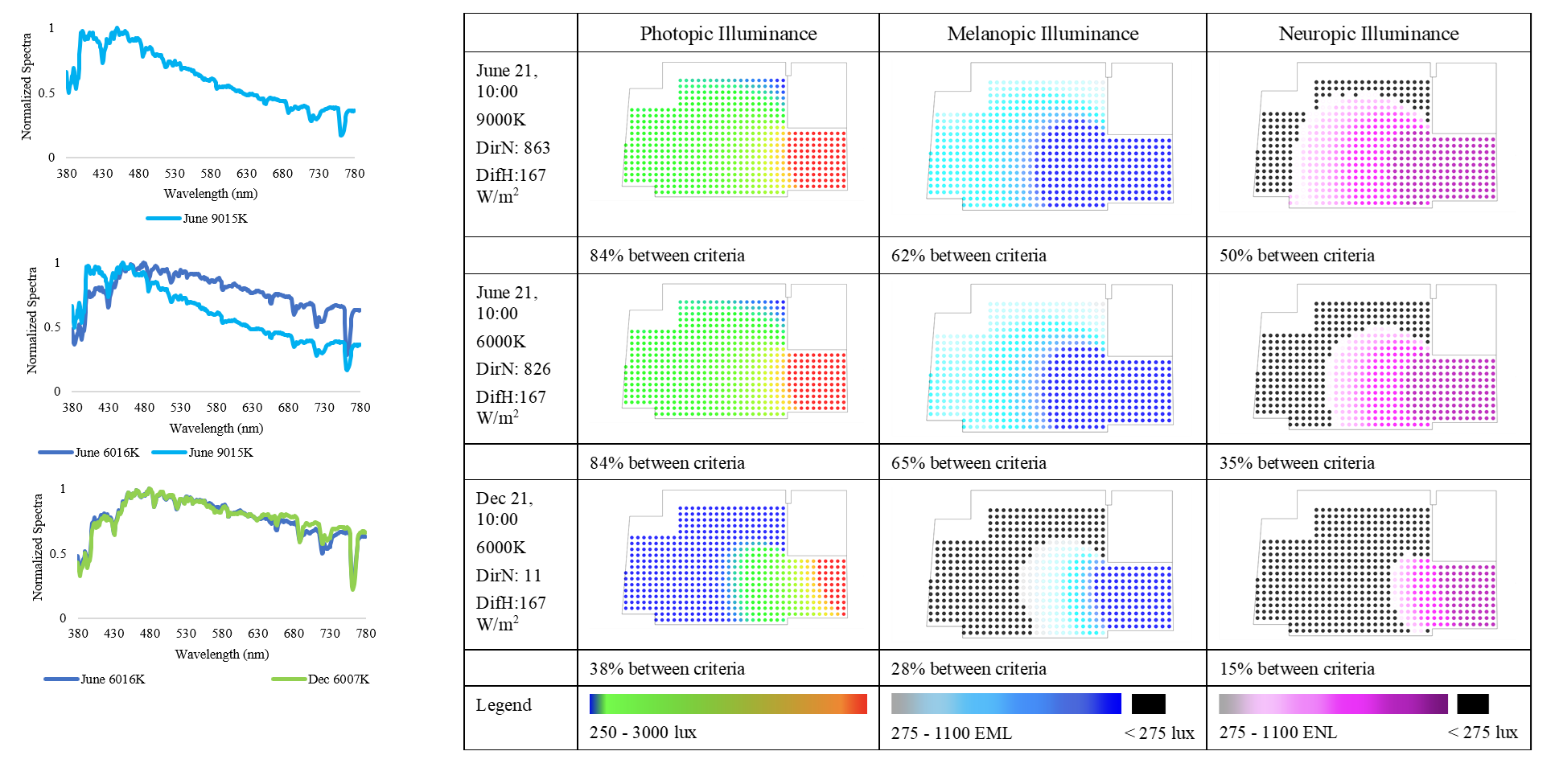
PUBLICATIONS:
-
Inanici M, Greenberg J, Lang RA, Struve J, Gruner KA. “Metrology for Neuropic response to light: A case study in a neonatal intensive care unit,” International Commission on Illumination (CIE) 2025 Conference, July 4-11, 2025.
We received the CIE 2025 Best Paper Award with this paper.
- Jung B, Cheng Z, Brennan M, Inanici M. "Multispectral Lighting Simulation Approaches for Predicting Opsin-driven Metrics and their Application in a Neonatal Intensive Care Unit," IBPSA 2023 Conference, Shanghai, China, September 4-6, 2023.
PRESENTATIONS:
- Mehlika Inanici visited Science of Light Center at the Cincinnati Children's Hospital and presented "Measurement and Simulation Toolbox for Light & Health in Built Environment" between September 10-14, 2024.
- "Designing for Circadian Rhythms," Greenbuild 2016, Los Angeles, CA, October 5, 2016 (with E. Clark).
- "Designing for Circadian Light and health Outcomes in Architectural Practice," 2016 AIBC (Architectural institute for British Columbia), Building a Resilient Future, May 17th, 2016 (with M. Brennan and E. Clark), Vancouver, Canada.
- “Designing for Circadian Friendly Built Environments,” 3 hour workshop, Lightfair International, Lightfair Institute, San Diego, CA, April 24-28, 2016 (with M. Brennan and E. Clark).
LINKS:
Links to relevant other research and publications:Sky Spectra Models / HDR_Circadian capture
DAYLIGHTING AND ELECTRIC LIGHTING ANALYSIS OF HAGIA SOPHIA USING HIGH DYNAMIC RANGE PHOTOGRAPHY TECHNIQUE AND SIMULATION
The lighting quality in Hagia Sophia has been a topic of interest for centuries among visitors, writers, poets, and researchers. In fact, almost all literature on Hagia Sophia includes a brief statement on its daylighting and sunlighting. In these documents lighting is defined as “poetic”, “magical” and “mystical”. Yet, there were not any comprehensive quantitative studies on Hagia Sophia’s lighting. The objectives of this research is:
1) To study the interior luminance values, luminance distribution patterns and luminance ratios in Hagia Sophia under naturally occurring sky conditions(the factors that are instrumental for creating the unique luminous environment in Hagia Sophia are discussed).
2) To study the electric lighting in conjunction with the daylighting in Hagia Sophia (the impact of electric lighting on the ambient light levels and luminance distribution patterns is evaluated during daylight hours).
PUBLICATIONS:
Noback A, Grobe L, and Inanici M. “Pools of light: Illumination by directional sunlight in Hagia Sophia,” Proceedings of the International Hagia Sophia Symposium II; History of an Old Monument, FSMVU Center for Hagia Sophia Studies, Istanbul, Turkey, May 27-29, 2022.
- Inanici M. Lighting Analysis of Hagia Sophia. Annuals of Hagia Sophia Museum: No. 17, Istanbul: December 2014, 128-202 (English/Turkish). © Hagia Sophia Museum, online version republished here with permission.
PRESENTATIONS:
Grobe L, Noback A, and Inanici M. "Perspectives on light scattering by window glass in Hagia Sophia," Forum Art of the Middle Ages, September 27, 2024, Friedrich Schiller University, Jena, Germany (presented by Grobe).
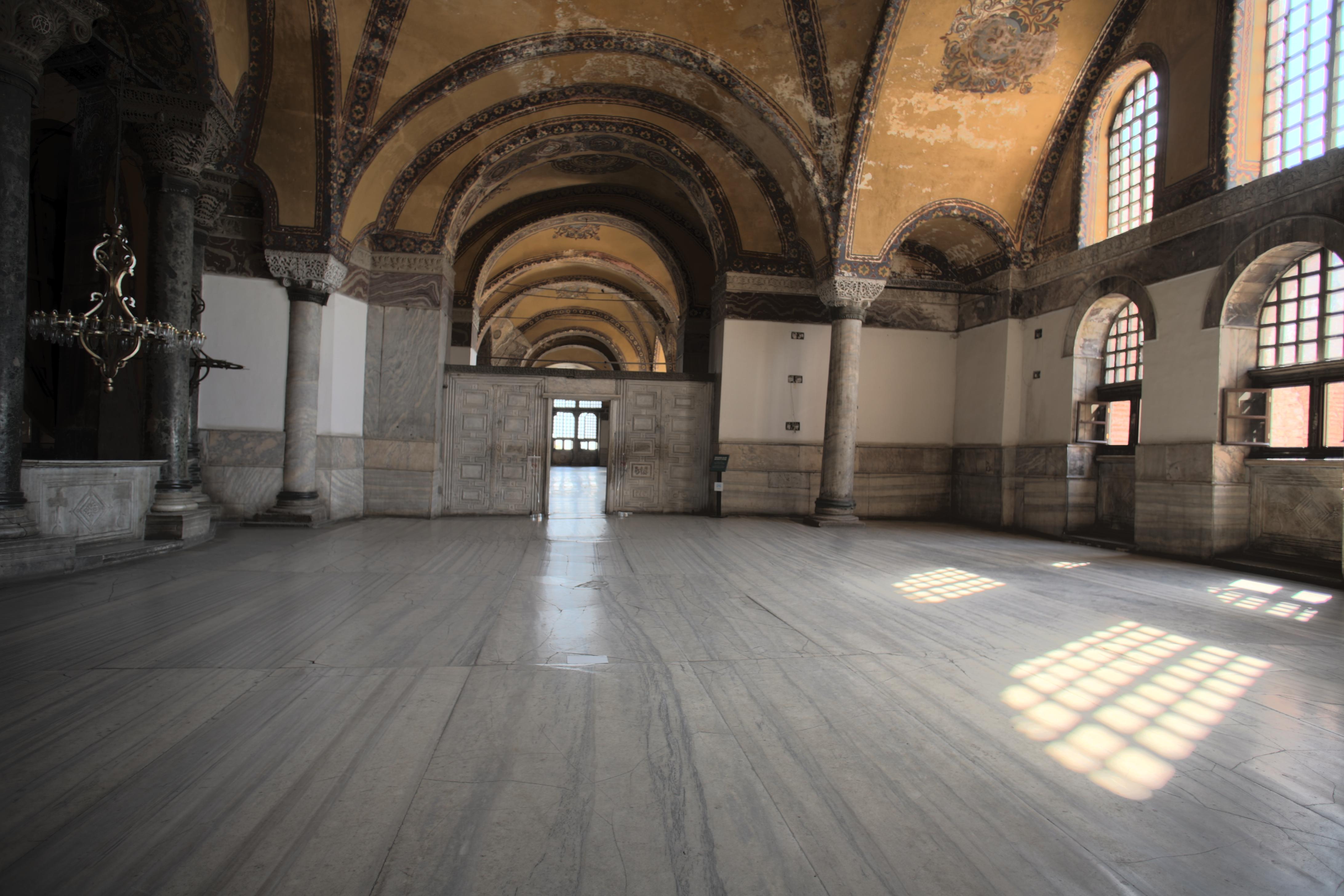
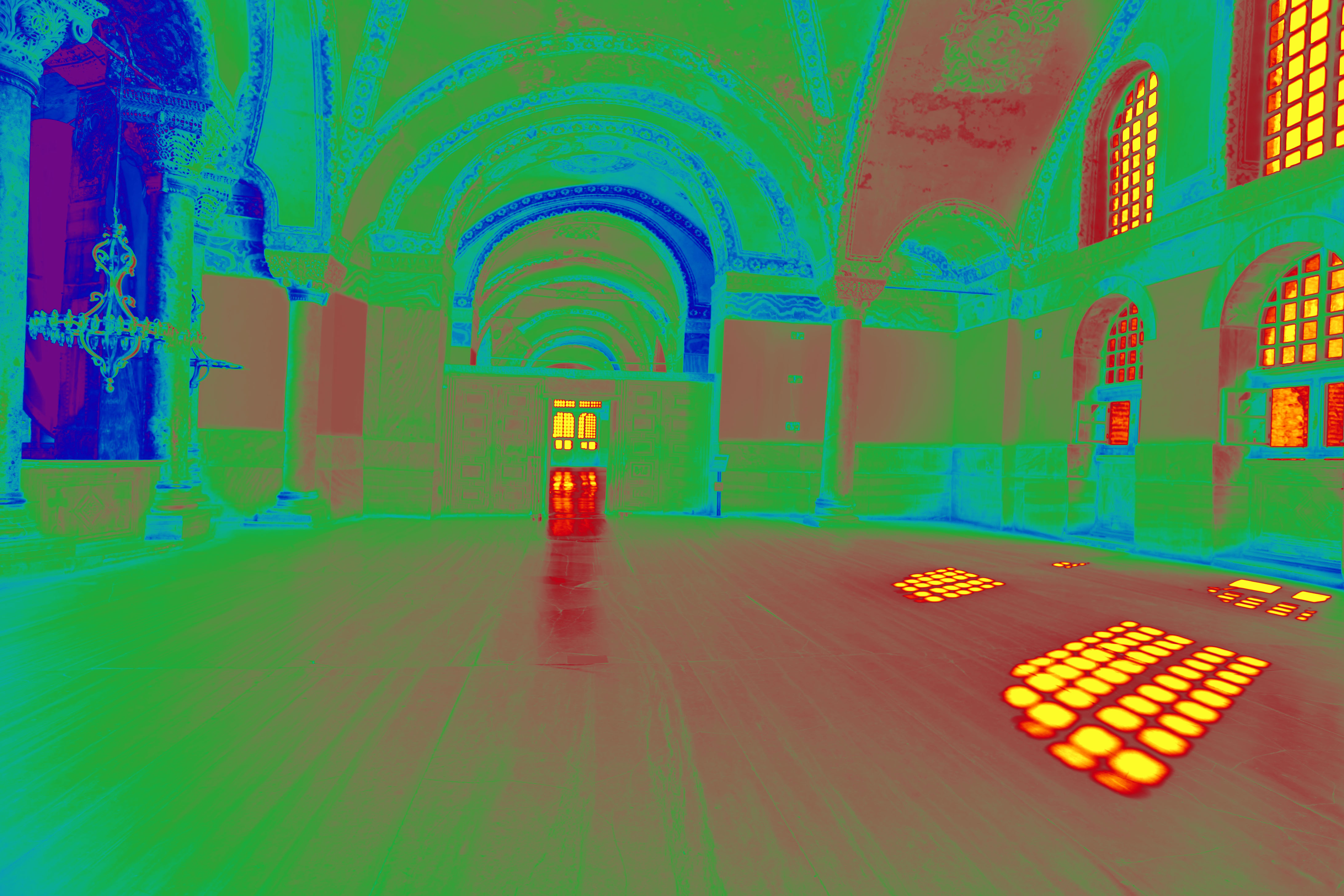

LINKS:
Links to relevant other research and publications: HDR photography / Extrapolation
MEASURING CIRCADIAN LIGHTING WITH HIGH DYNAMIC RANGE PHOTOGRAPHY
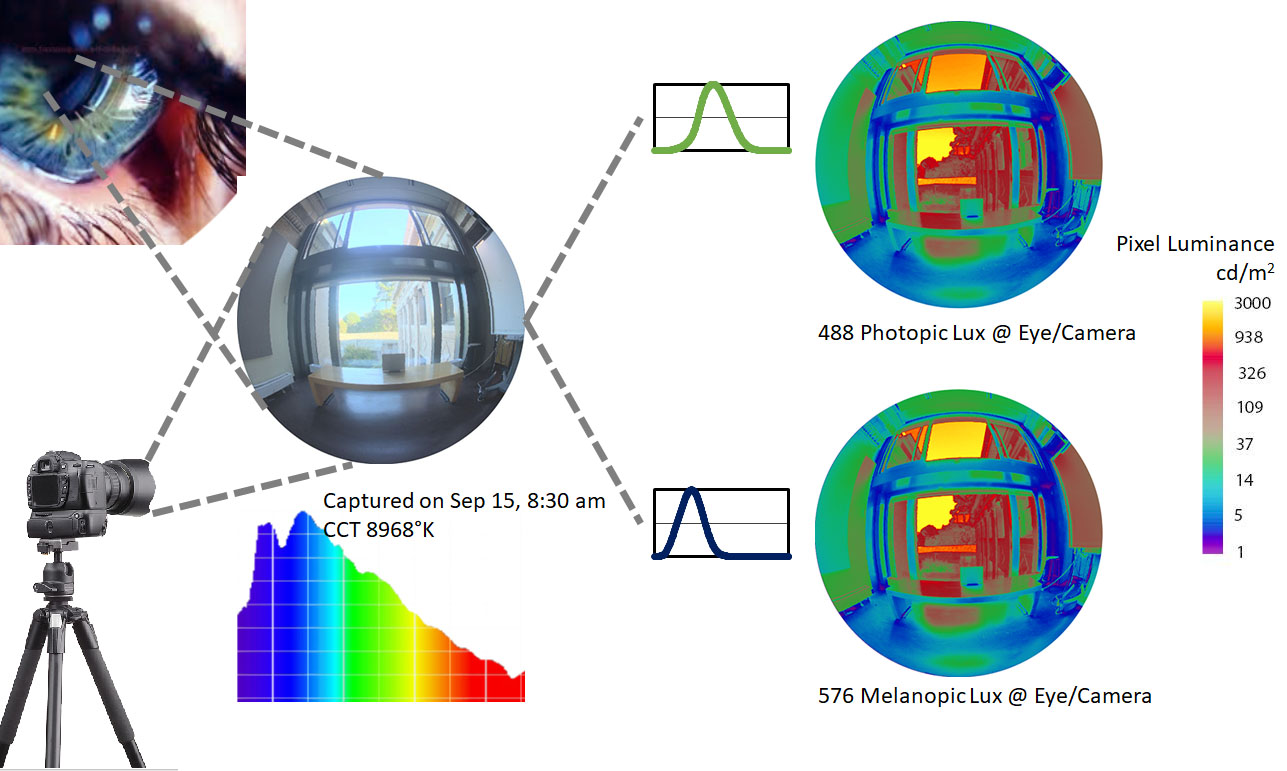
PUBLICATIONS:
The human ocular system functions in a dual manner. While the most well-known function is to facilitate vision, a growing body of research demonstrates its role in resetting the internal body clock to synchronize with the 24-hour daily cycle. Most research on circadian rhythms is performed in controlled laboratory environments. Little is known about the variability of circadian light within the built and natural environments. Currently, very few specialized devices measure the circadian light, and they are not accessible to many researchers and practitioners. In this paper, tristimulus colour calibration procedures for high dynamic range photography are developed to measure circadian lighting. Camera colour accuracy is evaluated through CIE trichromatic (XYZ) measurements; and the results demonstrate a strong linear relationship between the camera recordings and a scientific-grade colorimeter. Therefore, it is possible to correct for the colour aberrations and use high dynamic range photographs to measure both photopic and circadian lighting values. Spectrophotometric measurements are collected to validate the methodology. Results demonstrate that measurements from high dynamic range photographs can correspond to the physical quantity of circadian luminance with reasonable precision and repeatability. Circadian data collected in built environments can be utilized to study the impact of design decisions on human circadian entrainment and to create guidelines and metrics for designing circadian friendly environments.
PRESENTATIONS:
- Jung, B. "Workshop on Melanopic HDR Capture," Radiance Workshop 2022, Toronto, Canada.
- Inanici M. "Measuring and Analyzing the Circadian Light: A Discussion on Units, Metrics, and Techniques," Presentation at DIVA Day 2017,Berkeley, CA.
LINKS:
Links to relevant other research and publications: HDR photography / Lark
COMPUTING LONG TERM LUMINANCE MAPS FROM LIMITED NUMBER OF HDR IMAGERY
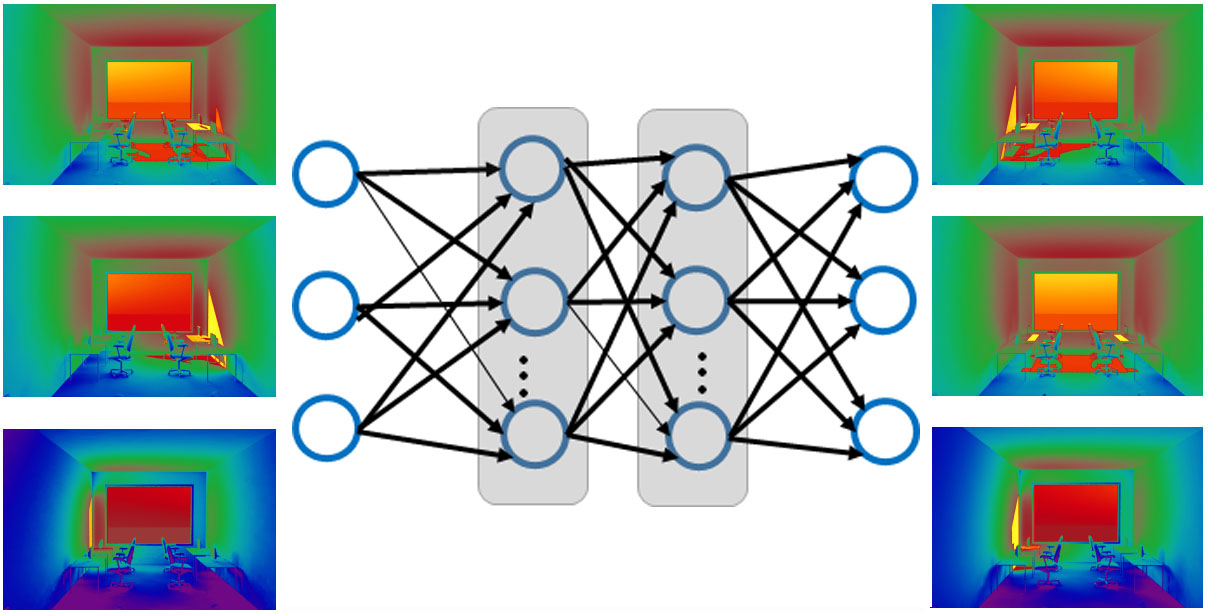
PUBLICATIONS:
Annual luminance maps provide meaningful evaluations for occupants’ visual comfort and perception. This paper presents a novel data-driven approach for predicting annual luminance maps from a limited number of point-in-time high-dynamic-range imagery by utilizing a deep neural network. A sensitivity analysis is performed to develop guidelines for determining the minimum and optimum data collection periods for generating accurate maps. The proposed model can faithfully predict high-quality annual panoramic luminance maps from one of the three options within 30 min training time: (i) point-in-time luminance imagery spanning 5% of the year, when evenly distributed during daylight hours, (ii) one-month hourly imagery generated during daylight hours around the equinoxes; or (iii) 9 days of hourly data collected around the spring equinox, summer and winter solstices (2.5% of the year) all suffice to predict the luminance maps for the rest of the year. The DNN predicted high-quality panoramas are validated against Radiance renderings.
This paper presents a novel method to accelerate annual luminance-based evaluations utilizing a deep neural network (DNN). From a small subset (5%) of high dynamic range (HDR) imagery, our method can predict annual panoramic luminance maps (with 360-degrees horizontal and 180-degrees vertical field of view) within an hour. Unlike the fixed camera viewpoint of perspective or fisheye projections that are commonly used in daylighting evaluations, panoramas allow full degree-of-freedom in camera roll, pitch, and yaw, thus providing a robust source of information for an occupant’s visual experience in a given environment. The DNN predicted high-quality panoramas are validated against Radiance RPICT renderings using a series of quantitative and qualitative metrics. With the developed workflow, practitioners and researchers can incorporate long-term luminance-based metrics over multiple view directions into the design and research process without the lengthy computing processes.
This paper describes the development of a novel prediction model to generate annual luminance maps of indoor space from a subset of images by using deep neural networks (DNNs). This paper describes the development of a novel prediction model to generate annual luminance maps of indoor space from a subset of images by using deep neural networks (DNNs). This model can be applied to accelerate annual luminance-based simulations and lays the groundwork for generating annual luminance maps utilizing High Dynamic Range captures of existing environments.
Computing Long-term Daylighting Simulations from High Dynamic Range Imagery using Deep Neural Networks received the Best paper Award in the 2018 Building Performance Analysis Conference and SimBuild, co-organized by ASHRAE and IBPSA-USA.
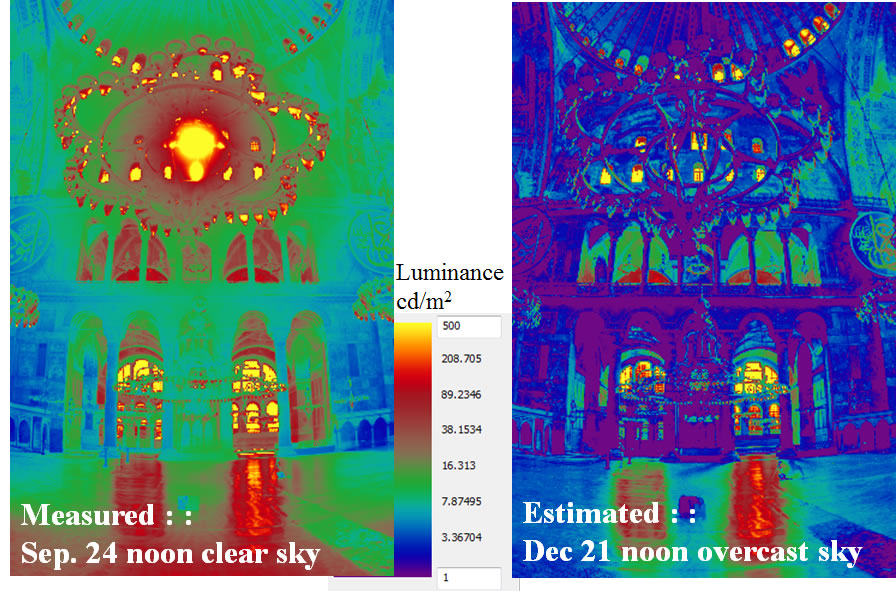
This paper describes the development of a technique for extrapolation of dynamic daylighting simulations from a limited number of high dynamic range photographs. This technique allows us to photographically capture and measure per-pixel lighting quantities from existing spaces in a limited time frame; and the measured information is used to establish a statistics based daylight coefficient model for the studied scene. It negates the need to explicitly model the geometry, material and lighting properties in existing environments, as they would be required in a typical simulation and daylight coefficient computation. Statistics based daylight coefficients can be used to perform daylighting simulations under any generic, arbitrary or any physically occurring sky conditions.
PRESENTATIONS:
COLLABORATIONS
PUBLICATIONS:
- Chmielinski M, Yost M, Cohen M, Inanici M, Simpson C. “Non-Ionizing Radiation Modeling to Predict Ambient Irradiance in Work Areas at an Indoor Cannabis Farm,” Annals of Work Exposures and Health, 2023. https://doi.org/10.1093/annweh/wxad048.
- Ko WH, Schiavon S, Altomonte S, Andersen M, Batool A, Browning W, Burrell G, Chamilothori K, Chan YC, Chinazzo G, Christoffersen J, Clanton N, Connock C, Dogan T, Faircloth B, Fernandes L, Heschong L, Houser KW, Inanici M, Jakubiec A, Joseph A, Karmann C, Kent M, Konis K, Konstantzos I, Lagios K, Lam L, Lam F, Lee E, Levitt B, Li W, MacNaughton P, Malekafzali-Ardakan A, Mardaljevic J, Matusiak B, Osterhaus W, Petersen S, Piccone M, Pierson C, Protzman B, Rakha T, Reinhart R, Rockcastle S, Samuelson H, Santos L, Sawyer A, Selkowitz S, Sok E, Strømann-Andersen J, Sullivan WC, Turan I, Unnikrishnan G, Vicent W, Weissman D, Wienold J. “Window View Quality: Why It Matters and What We Should Do,” Leukos, the Journal of the Illuminating Engineering Society, 18(3): 2022, 259-267. https://doi.org/10.1080/15502724.2022.2055428
- Parsaee M, Demers CM, Lalonde JF, Potvin A, Inanici M, and Hébert M. “Biophilic Photobiological Adaptive Envelopes for Sub-Arctic Buildings: Exploring Impacts of Window Sizes and Shading Panels’ Color, Reflectance, and Configuration”, Solar Energy, 220: 802-827, 2021. https://doi.org/10.1016/j.solener.2021.03.065
- Parsaee M, Demers CM, Lalonde JF, Potvin A, Inanici M, and Hebert M. “Human-centric Lighting Performance of Shading Panels in Architecture: A Benchmarking Study with Lab Scale Physical Models under Real Skies,” Solar Energy, 204: 354-368, 2020. https://doi.org/10.1016/j.solener.2020.04.088
DAYLIGHT DRIVEN CIRCADIAN LIGHTING DESIGN
In this research, the groundwork is established to start to create a set of guidelines to help architects and designers maximize the potential for daylight to provide circadian stimulus at the earliest stages of a project. This is accomplished through a series of lighting simulations that explore and test various architectural parameters that affect daylight-driven circadian lighting, with simultaneous consideration given to photopic lighting availability and visual comfort. The architectural parameters tested in this study included window head height, building orientation, shading devices, visual obstructions to the sky, and room depth. The results show that informed design decisions could maximize circadian potential in a given space, while achieving visually satisfactory luminous environments.
PUBLICATIONS:
LINKS:
Links to relevant other research and publications: Lark / Sky Spectra
COMPARISON OF SKY MODELLING PRACTICES AND SIMULATION TECHNIQUES
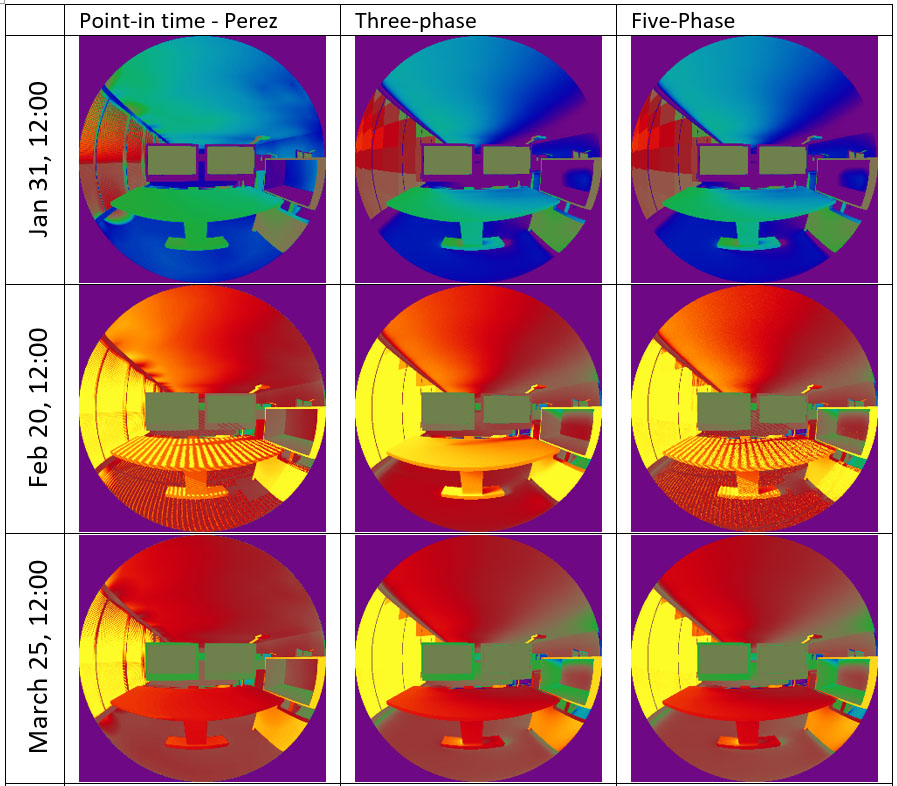
PUBLICATIONS:
Occupant centric performance approaches in daylighting studies promote design decisions that support human visual comfort, productivity, and visual preferences, along with more conventional energy efficiency criteria. Simulating per-pixel luminance values and luminance distribution patterns for the entire scene allows us to analyze the occupant centric metrics and performance criteria. However, there are a number of different sky models, complex fenestration models, and simulation techniques that produce either conventional point in time images or annual luminance maps. This paper discusses the similarities and differences between different techniques; and a comparison analyses provides insight about their impact on occupant centric lighting measures. The comparisons for sky modeling include the conventional CIE skies (Clear, Intermediate, and Overcast), measurement based CIE models, Perez all-weather skies, and high dynamic range image based skies. The comparison of simulation techniques include point in time simulations, image based lighting simulations, and annual luminance simulations (three-phase and five-phase methods). Results demonstrate that measurement based sky models match real world conditions with reasonable proximity, and generic CIE skies consistently underestimate the indoor lighting conditions. Annual simulation methods provide a large database of temporal luminance variations, where individual instances are comparable to point in time simulations. Long term luminance simulations provide opportunities to evaluate the percentage of the year that a given luminance based criteria is met or violated.

Inanici M. and Liu Y. “Robust Sky Modelling Practices in Daylighting Simulations,” Passive and Low Energy Architecture (PLEA) 2016 Conference, Los Angeles, CA, July 11-13, 2016.
The demand for more sustainable building practices prompted the use of more analytical tools in the design processes. This research addresses a need to compare various sky models used in daylighting practices. The sky models can be mathematical or image based; they can be generic or measurement based. The selection of the right model depends on the scope of the simulation. It is recommended to use generic CIE models only for basic comparisons. When generated or calibrated with diffuse and direct irradiance values, CIE, Perez, and image based sky models yield to comparable results. Image based sky models are most useful to capture the local conditions that include the complexities of clouds and solar corona, surrounding urban fabric and forestry.
LINKS:
Link to relevant other research and publications: Image Based Skies / hdrscope / HDRI / Extrapolation
HIGH DYNAMIC RANGE
PHOTOGRAPHY
AS A LUMINANCE MAPPING TECHNIQUE
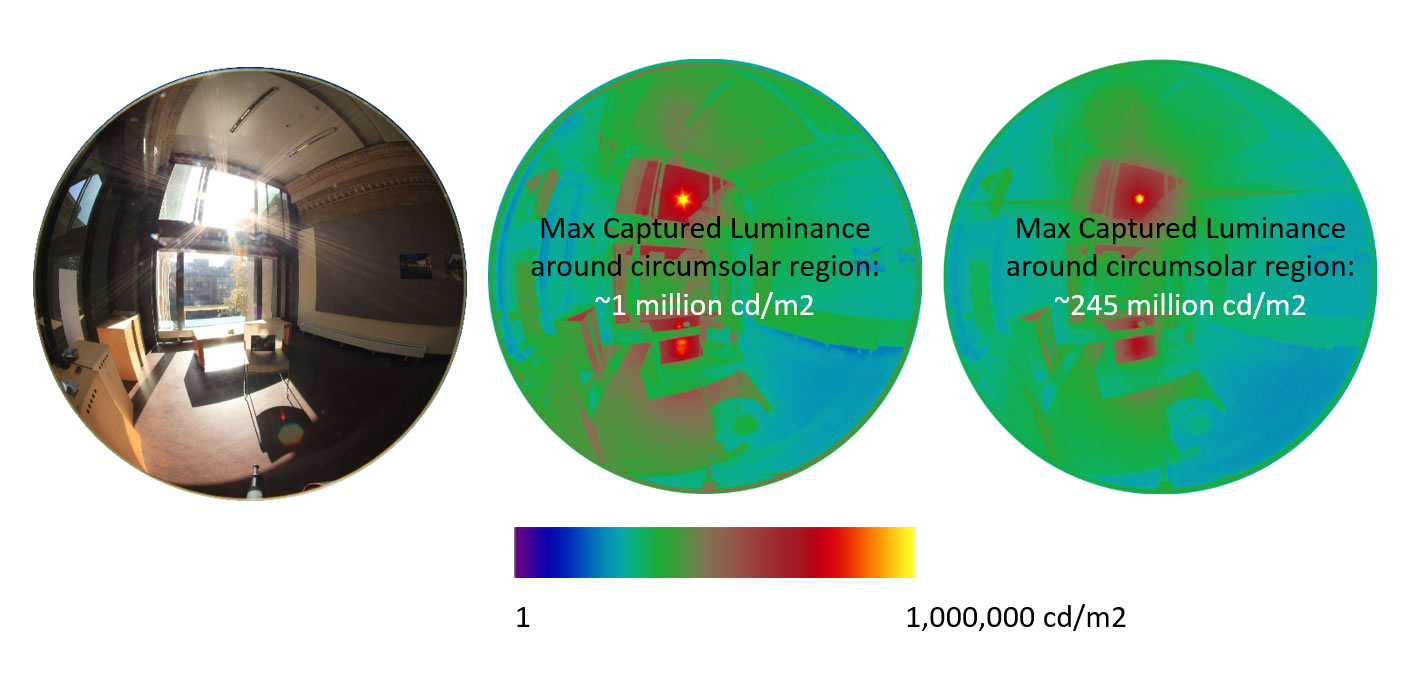
The potential, limitations, and applicability of the High Dynamic Range (HDR) photography technique is evaluated as a luminance mapping tool. Multiple exposure photographs of static scenes are taken with a digital camera to capture the wide luminance variation within the scenes. The camera response function is computationally derived using the Photosphere software, and is used to fuse the multiple photographs into HDR images. The vignetting effect and point spread function of the camera and lens system is determined. Laboratory and field studies have shown that the pixel values in the HDR photographs can correspond to the physical quantity of luminance with reasonable precision and repeatability.
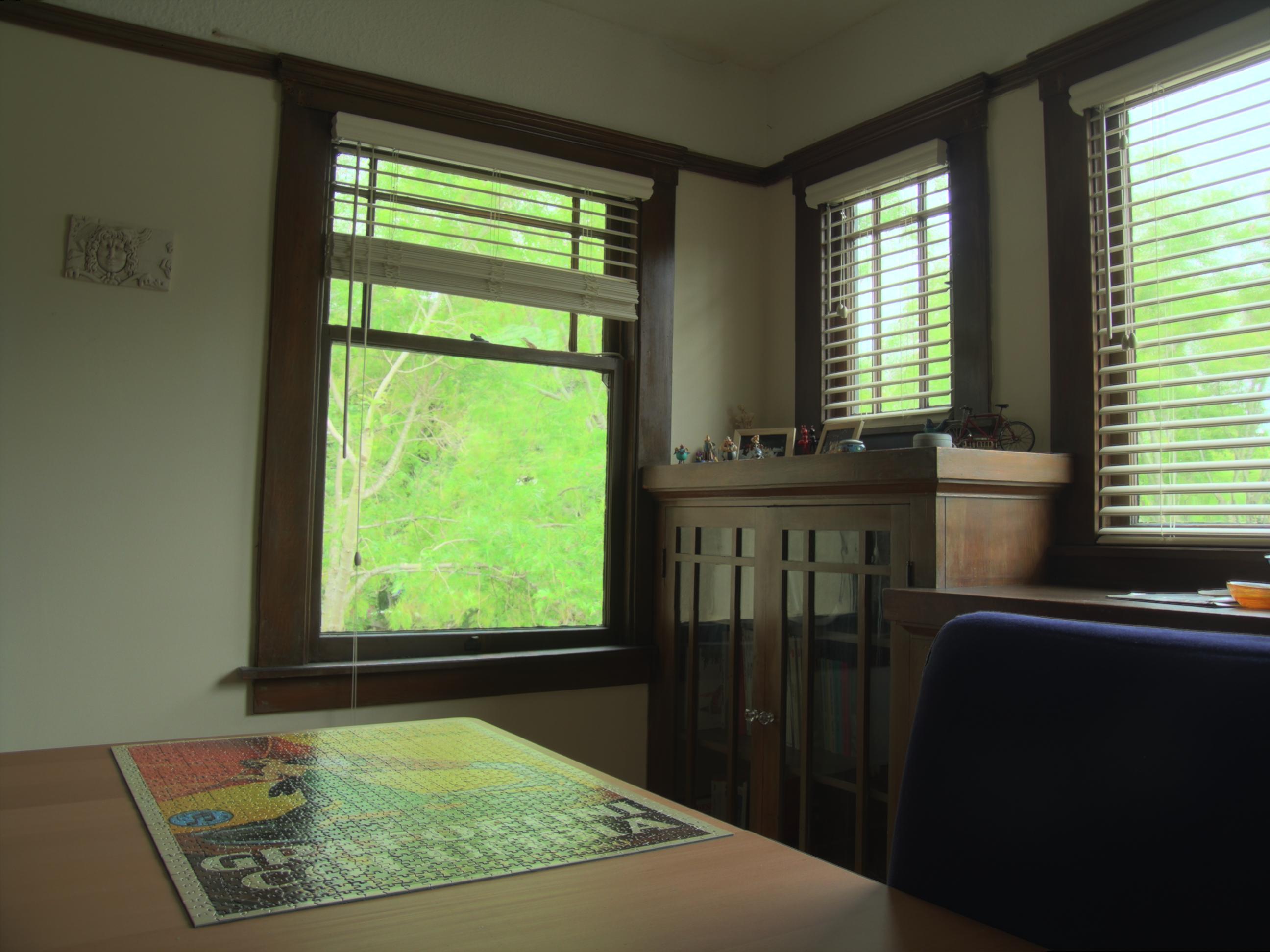
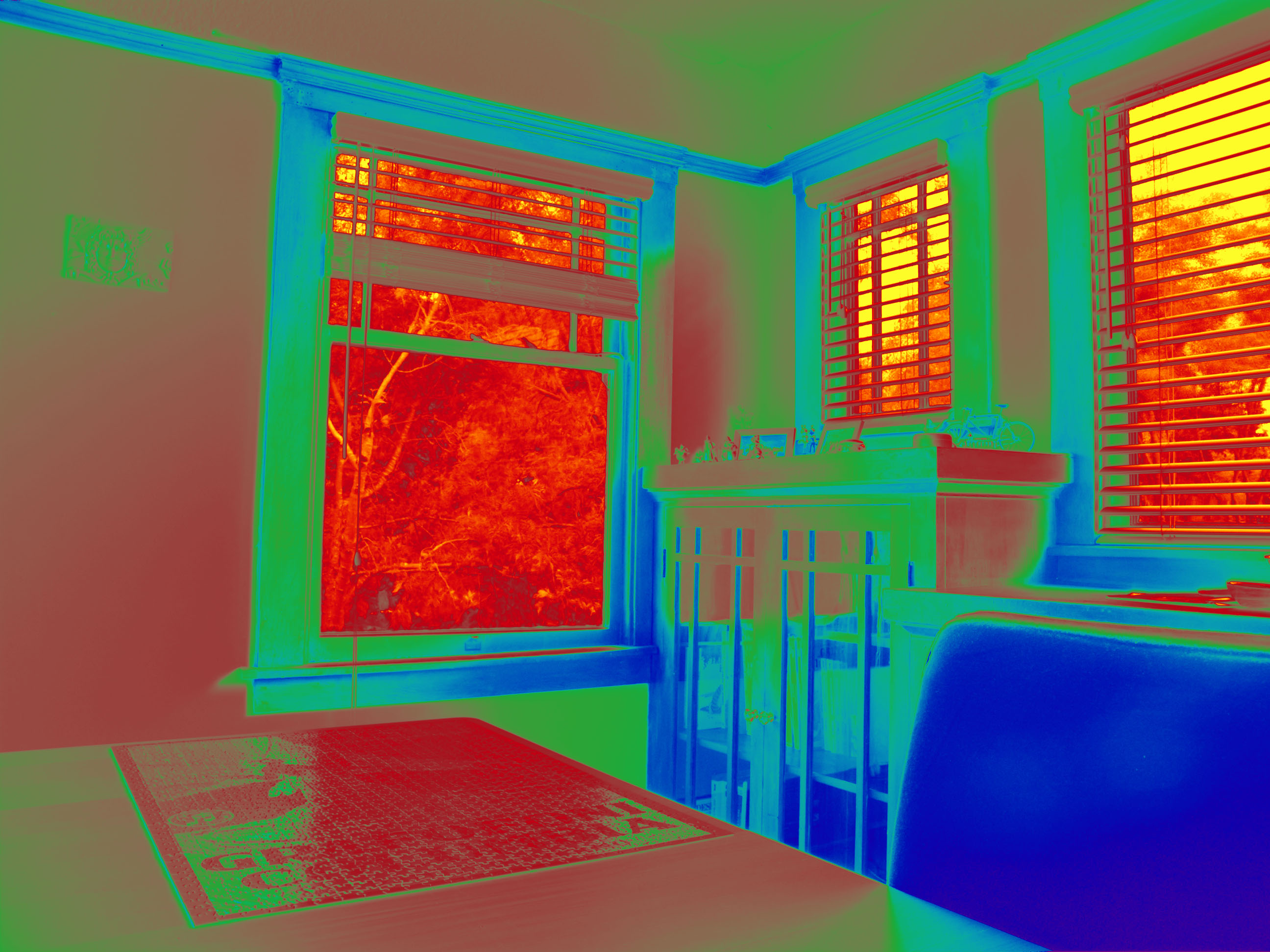

PUBLICATIONS:
- Inanici MN. “Evaluation of High Dynamic Range Photography as a Luminance Measurement Technique”, Journal of Lighting Research and Technology, Vol. 38, no. 2, June 2006, pp. 123-126.
Evaluation of High Dynamic Range Photography as a Luminance Measurement Technique has been selected as one of the 25 "classic" papers in the 50th volume of journal of Lighting Research and Technology (January 2018). In their paper, Boyce (editor in chief) and Carter (immediate past chairman of LRT) has selected 25 papers that "can be regarded as classics, in the sense that they have either initiated an area of research, completed an area of research, or, when the topic is active, have been frequently cited".
UW Architecture news: http://arch.be.uw.edu/democratized-data-classic-research/
-
Inanici
MN
.
“Per-pixel Data
Acquisition with High Dynamic Range Photography” International
Commission on Illumination (CIE) 2005 Conference, Leon, Spain,
18-20 May, 2005.
PRESENTATIONS:
-
Inanici M. “The play of Light, Shadows, and Reflections: Capturing the Luminous Environment, Understanding the Human Visual Comfort,” Saint Gobain Daylighing Community Program, Paris, France, June 28th, 2017.
- Workshop, “Introduction to High Dynamic Range Photography,” 3 hour workshop (with A. Jakubiec), PLEA Conference, Los Angeles, CA, July 13, 2016
- Inanici M. “Recording Light: High Dynamic Range Imagery,” 3 hour workshop, Lightfair International, Lightfair Institute, Las Vegas, NV, May 26, 2008.
- Inanici M. “High Dynamic Range Imaging,” 3 hour workshop, Lightfair International, Lightfair Institute, New York, NY, 2007.
APPLICATIONS:
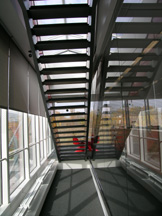 |
Daylighting
the New York Times Headquarters Building
Low Glare Outdoor Luminaire:
California Energy Commission’s Public Interest Energy
Research (PIER) Buildings Program
New Lighting Solutions for High-Bay Spaces: High-output T5 Lamps and Luminaires- Federal Energy Management Program (FEMP) Focus, Fall 2004.
|
ACKNOWLEDGEMENTS:
"Evaluation of High Dynamic Range Photography as a Luminance Measurement Technique" was funded by the Assistant Secretary for Energy Efficiency and
Renewable Energy, Office of Building Technology, Building Technologies Program of
the U.S. Department of Energy under Contract No. DE-AC03-76SF00098.
LINKS:
Link to relevant other research and publications: Image Based Skies / hdrscope / Extrapolation / Hagia Sophia
hdrscope
This paper describes the development of a new tool called hdrscope that enables users to perform qualitative and quantitative lighting analysis via per-pixel methods. Using a simulated and photographically captured lab space as a case study, per-pixel analysis methods are described, challenges associated with per-pixel lighting analysis are discussed, and hdrscope analysis techniques are demonstrated. hdrscope is intended to lower the entry barrier for lighting professionals, and to facilitate the utilization of lighting analysis in early design and development stages as well as post occupancy. It also provides a user friendly tool for lighting experts while filling in the gaps among the current lighting analysis tools.

PUBLICATIONS:
SOFTWARE:
- hdrscope: High Dynamic Range image processing and analysis for architectural lighting design.
LINKS:
Link to relevant other research and publications: Image Based Skies / hdrscope / Extrapolation / Hagia Sophia
DEVELOPMENT AND EVALUATION OF IMAGE BASED SKY MODELS FOR DAYLIGHTING APPLICATIONS
This research demonstrates the use of High Dynamic Range (HDR) fisheye images of the sky dome in lighting simulations. The objective is to improve the
accuracy of simulations with site specific sky conditions. The luminance information stored at a pixel level in an HDR photograph is used to light the
simulated environment through an Image Based Rendering (IBR) technique. The results show that image based sky models can provide a more accurate
and efficient method for defining the sky luminance distributions and the impact of surrounding urban fabric and vegetation as compared to generic CIE sky models and explicit modeling of surrounding urban fabric and forestry.

PUBLICATIONS:
-
Inanici M. “Evaluation of High Dynamic Range Image-based Sky Models in Lighting Simulation,” Luekos, Journal of the Illuminating Engineering Society (IES), 7(2), October 2010, 69-84.
-
Inanici M. “Applications of Image based Rendering in Lighting Simulation: Development and Validation of Image based Sky Models”, Proceedings of the 11th International Building Performance Simulation Association (IBPSA) Conference, July 27-30, 2009, Glasgow, UK.
PRESENTATION:
ACKNOWLEDGEMENT:
This work was funded by the University of Washington Royalty Research Fund (2009-2010).
DATA:
HDR sky images were captured for one day in every month between December to June (winter solstice to summer solstice) at 15 minute intervals during daylight hours. The database includes images from December 28, 2009 (32 image sets), Jan 31, 2010 (38 image sets), Feb. 20, 2010 (43 image sets), March 27, 2010 (49 image sets), April 25, 2010 (48 sets), May 23 (43 image sets), and June 22 (53 image sets). The dates were chosen around the 21st of each month. Dates vary to allow capturing varying weather conditions and to avoid inclement weather (to prevent equipment damage). The database covers a wide range of possible sun angles and sky conditions for Seattle.
LINKS:
Link to relevant other research and publications: HDRI / hdrscope / Extrapolation
GlareShade: A VISUAL COMFORT BASED APPROACH TO OCCUPANT CENTRIC SHADING SYSTEMS
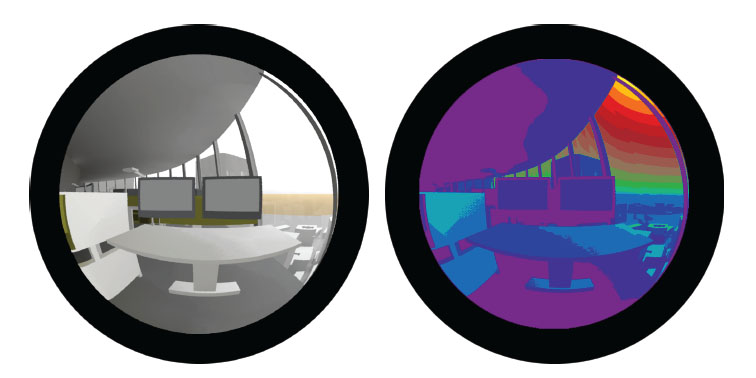
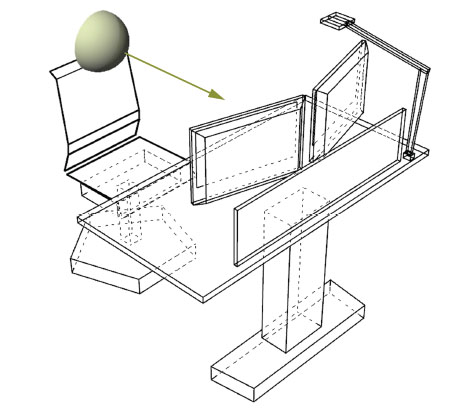
This paper presents a novel method for designing of an occupant-centric shading algorithm that utilizes visual comfort metric as the form-generating criteria. Based on the premise of previous studies that demonstrate glare as the most important factor for operating shading devices, GlareShade is introduced as a simulation-based shading methodology driven by occupant’s visual comfort. GlareShade not only responds to changing outdoor conditions such as the movement of the sun and the variation of cloud cover, but it also accounts for building specific local conditions. GlareShade draws its strength and flexibility from an occupant-centric approach that is based on the visual field of view of each occupant as the occupant is performing common visual tasks in a given environment, and the developed shading system is linked to a distributed sensing network of multiple occupants. ShadeFan is demonstrated as a proof-of-concept dynamic shading system utilizing the GlareShade method.
LUMINANCE DISTRIBUTION PATTERNS AND GLARE: HUMAN VISUAL COMFORT METRICS
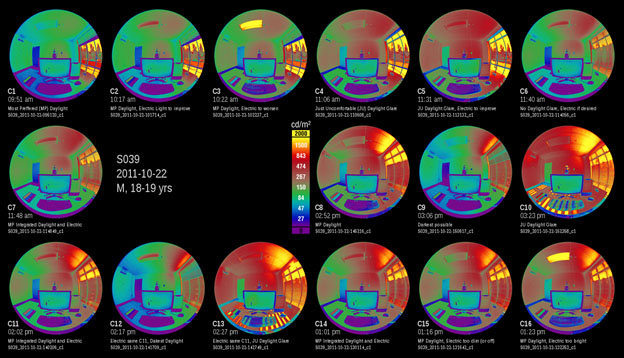
- van den Wymelenberg K and Inanici M. “Limitations of Common Lighting Metrics for Evaluating Human Visual Comfort in Spaces with Daylight,” Illuminating Engineering Society (IES) 2013 Conference, Huntington Beach, CA, October 26-29, 2013.
LINKS:
Link to relevant other research and publications: HDRI / hdrscope / Per-Pixel
LUMINANCE CONTRAST AS A DEPTH CUE
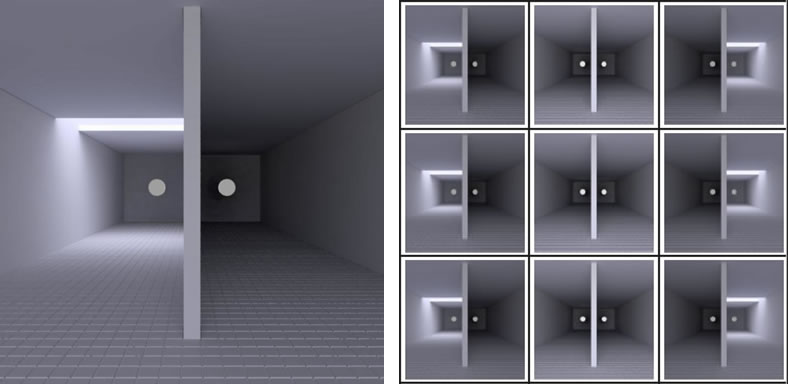
PUBLICATIONS:
-
Tai NC and Inanici M. “Luminance Contrast as Depth Cue: Investigations and Design Applications,”
Journal of Computer-Aided Design and Applications, 9(5), 2012, 691-705 [abstract].
-
Tai NC and Inanici M. “Space Perception and Luminance Contrast: Investigation and Design Applications through Perceptually based Simulations,” Spring Simulation Multi-conference, Symposium on Simulation for Architecture and Urban Design (SimAUD2010), Orlando, FL, April 12-15, 2010.
-
Tai NC and Inanici M. “Lighting in Real and Pictorial Spaces: A Computational Framework to Investigate the Scene based Lighting Distributions and their Impact on Depth Perception,” Association of Computer Aided Design and Research in Asia (CAADRIA) 2010 Conference, Hong Kong, April 7-10, 2010.
-
Tai NC and Inanici M. “Depth perception as a function of Lighting, Time, and Spatiality,” Short paper, Illuminating Engineering Society (IES) 2009 Conference, Seattle, WA, November 16-18, 2009.
-
Tai NC and Inanici M. “Depth Perception in Real and Pictorial Spaces: A Computational Framework to Represent and Simulate the Built Environment,” Proceedings of the Association of Computer Aided Design and Research in Asia (CAADRIA) 2009 Conference, Yunlin, Taiwan, April 22-25, 2009.
PER-PIXEL LIGHTING DATA ANALYSIS
PUBLICATIONS:
LINKS:
Link to relevant other research and publications: Image Based Skies / hdrscope / HDRI / VLL
NEW METRIC FOR QUANTIFYING THE DIRECTIONALITY OF LIGHT:
DIRECTIONAL - TO - DIFFUSE RATIO
 |
Directionality of light is the balance between the diffuse and directional components within an environment. It has a significant impact on the appearance of 3D objects; and the visual performance and comfort of occupants within that environment. Poor directionality may produce harsh shadows on the task, cause veiling reflections towards the viewing angle, or create a dull environment. Adequate directionality may model 3D surfaces, reveal the surface textures or details of a task, and create an aesthetically pleasing environment.
A new metric is derived from the basic definition of directionality: The diffuse and directional components of the luminous environment are isolated as a unique feature of simulation-based approach and the ratio of the directional-to-diffuse light is calculated. The rationale and methodology of the directional-to-diffuse ratio is discussed through visual demonstrations and quantified metrics. |

.
PUBLICATION:
VIRTUAL LIGHTING LABORATORY
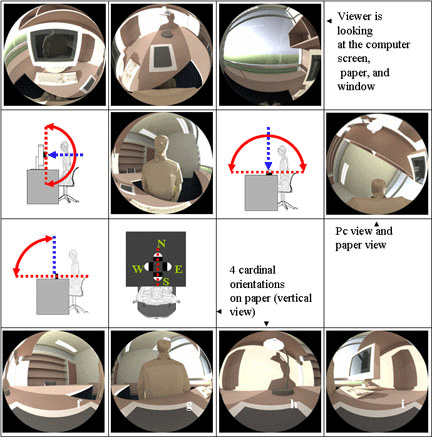
Virtual
Lighting Laboratory (VLL) is an advanced lighting analysis tool and
methodology
that is based on post-processing of the physically-based renderings. It enhances the integration
of the lighting analysis
into the
architectural design process through computational tools that make the
analysis
more convenient, accessible, accurate, and rigorous. The research
includes the
theory, implementation, and application of the virtual meters
(luminance meter,
illuminance meter, contrast meter, integrating sphere, and colorimeter)
as well as the development of unique analysis options and metrics that
are pertinent to the computational per-pixel data.
PUBLICATIONS:
PRESENTATION:
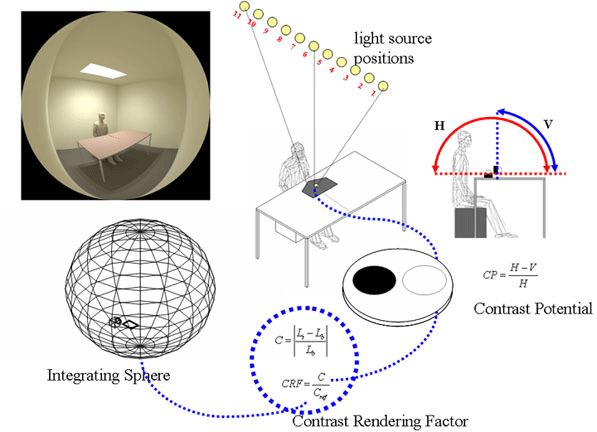
LINKS:
Link to relevant other research and publications: Per-Pixel / hdrscope / HDRI
ENERGY EFFICIENT BUILDING DESIGN
PUBLICATIONS:
Back to main page
© Mehlika Inanici
Last update: August 2022
![]()
![]()
![]()
![]()
![]()

